Corporate Finance
12th Edition
ISBN: 9781259918940
Author: Ross, Stephen A.
Publisher: Mcgraw-hill Education,
expand_more
expand_more
format_list_bulleted
Question
Chapter 2, Problem 1MC
Summary Introduction
To discuss: The Cash flow of the company.
Introduction: The cash flow statement of any company represents the inflow and outflow of cash during the specified period. Along with the amount, it states the reason for the flow of cash.
Expert Solution & Answer
Want to see the full answer?
Check out a sample textbook solution
Students have asked these similar questions
You invest $1,000 a year for 10 years at 6 percent and then invest $2,000 a year for an additional 10 years at 6 percent. How much will you have accumulated at the end of the 20 years?
Answer: $49,967
*Please include all work & formulas
No ai please!
What is the role of an underwriter in an IPO?A) To lend money to the companyB) To set the dividend policyC) To buy the securities and sell them to the publicD) To manage the company’s operations
need he
No ai tool
What is the role of an underwriter in an IPO?A) To lend money to the companyB) To set the dividend policyC) To buy the securities and sell them to the publicD) To manage the company’s operations
Chapter 2 Solutions
Corporate Finance
Ch. 2 - Prob. 1CQCh. 2 - Prob. 2CQCh. 2 - Prob. 3CQCh. 2 - Prob. 4CQCh. 2 - Prob. 5CQCh. 2 - Cash Flow from Assets Why is it not necessarily...Ch. 2 - Operating Cash flow Why is it not necessarily bad...Ch. 2 - Net Working Capital and Capital Spending Could a...Ch. 2 - Cash Flow to Stockholders and Creditors Could a...Ch. 2 - Prob. 10CQ
Ch. 2 - Building a Balance Sheet Alesha, Inc., has current...Ch. 2 - Building an Income Statement Gia, Inc, has sales...Ch. 2 - Market Values and Book Values Klingon Cruisers,...Ch. 2 - Calculating Taxes Terri Simmons is single and had...Ch. 2 - Calculating OCF Sheaves, Inc., has sales of...Ch. 2 - Prob. 6QAPCh. 2 - Prob. 7QAPCh. 2 - Prob. 8QAPCh. 2 - Prob. 9QAPCh. 2 - Prob. 10QAPCh. 2 - Cash Flows Ritter Corporations accountants...Ch. 2 - Financial Cash Flows The Stancil Corporation...Ch. 2 - Building an Income Statement During the year, the...Ch. 2 - Prob. 14QAPCh. 2 - Prob. 15QAPCh. 2 - Residual Claims Stark: Inc., is obligated to pay...Ch. 2 - Net Income and OCF During 2019, Rainbow Umbrella...Ch. 2 - Prob. 18QAPCh. 2 - Prob. 19QAPCh. 2 - Prob. 20QAPCh. 2 - Prob. 21QAPCh. 2 - Prob. 22QAPCh. 2 - Cash Flows You are researching Time Manufacturing...Ch. 2 - Prob. 24QAPCh. 2 - Prob. 1MCCh. 2 - Prob. 2MCCh. 2 - Prob. 3MC
Knowledge Booster
Similar questions
- Which of the following is a money market instrument?A) Treasury bondsB) Corporate bondsC) Commercial paperD) Common stock need help!!arrow_forwardFinance Subject.Which of the following is a money market instrument?A) Treasury bondsB) Corporate bondsC) Commercial paperD) Common stockarrow_forwardHelp please without use of AI. no What is the main purpose of financial ratios?A) To guarantee a company's profitabilityB) To evaluate a company's financial performance and healthC) To increase a company's stock priceD) To ensure a company's debts are eliminatedarrow_forward
- Please don't use ai tool If a stock’s beta is 1.5, what does this indicate?A) The stock is less volatile than the marketB) The stock is more volatile than the marketC) The stock is not correlated with the market D) The stock is risk-freearrow_forwardNo ai What is the primary function of a financial market?A) To set interest ratesB) To facilitate the transfer of funds between savers and borrowersC) To regulate the banking industryD) To manage the government’s budgetarrow_forwardno What is the main purpose of financial ratios?A) To guarantee a company's profitabilityB) To evaluate a company's financial performance and healthC) To increase a company's stock priceD) To ensure a company's debts are eliminatedarrow_forward
- please don't use chatgpt What happens to the value of money when inflation increases?A) The value of money increasesB) The value of money decreasesC) The value of money remains unchangedD) The value of money fluctuates randomly helparrow_forwardDo not use Ai tool What happens to the value of money when inflation increases?A) The value of money increasesB) The value of money decreasesC) The value of money remains unchangedD) The value of money fluctuates randomlyarrow_forwardNo AI tool. Which of the following best defines a bond's coupon rate?A) The market rate of interest on the bondB) The annual interest payment as a percentage of the bond's face valueC) The difference between the bond's face value and its market priceD) The total return from holding the bond to maturityarrow_forward
- No ai!! answer it A portfolio's risk can be reduced by: A) Investing in a single stock B) Diversifying investments across different asset classes C) Borrowing money to invest more D) Only investing in high-risk assets need help.arrow_forwardNo chatgpt! A portfolio's risk can be reduced by: A) Investing in a single stock B) Diversifying investments across different asset classes C) Borrowing money to invest more D) Only investing in high-risk assets need help!arrow_forwardNo chatgpt!! A portfolio's risk can be reduced by:A) Investing in a single stockB) Diversifying investments across different asset classesC) Borrowing money to invest moreD) Only investing in high-risk assetsarrow_forward
arrow_back_ios
SEE MORE QUESTIONS
arrow_forward_ios
Recommended textbooks for you
 Intermediate Financial Management (MindTap Course...FinanceISBN:9781337395083Author:Eugene F. Brigham, Phillip R. DavesPublisher:Cengage Learning
Intermediate Financial Management (MindTap Course...FinanceISBN:9781337395083Author:Eugene F. Brigham, Phillip R. DavesPublisher:Cengage Learning


Intermediate Financial Management (MindTap Course...
Finance
ISBN:9781337395083
Author:Eugene F. Brigham, Phillip R. Daves
Publisher:Cengage Learning

